Life in America: The Reagan Years, A Webography
Welcome to Life in America: The Reagan Years--
A Webography Project about the 1980s

This website was collaboratively created by students enrolled in a section of HNRS 2020: Critical Thinking about Great Ideas (taught by Dr. Heath A. Diehl) at Bowling Green State University during the spring term of 2011. Students enrolled in the class were asked to select one topic related to one or more of the required course readings (see below for What We're Reading) and conduct exhaustive web research on that topic. From their research, students were required to select (and create a summary and evaluation annotation of) a minimum of ten sources to include on this website.
The specific assignment that students were asked to complete was framed as follows:
This semester, you and your peers will work individually on one section of a collaborative webography on topics related to Margaret Atwood’s novel The Handmaid’s Tale (1985)—the anchor text for our study of “great ideas.” Keep in mind that this webography will have a public audience and it is designed to provide its readers (i.e., other students like you, but also just interested parties who may not be enrolled in an institution of higher education) with information that will assist them in understanding the many historical, political, and socio-cultural issues raised in and by Atwood’s novel. To that end, your tone should be formal, your presentation should be professional, your researching skills should be exacting, and your writing should be closely edited and proofread. [See below for the complete Webography Assignment Sheet, which I provide as a Word document.]
In addition to offering readers a thoughtfully annotated and carefully selected collection of web resources on topics related to The Handmaid's Tale, this website also seeks to offers its readers an introduction to American politics and culture during the 1980s. While no website of this nature can claim to offer an exhaustive look at such a vast topic, this site does cover some of the more pervasive political trends, socio-cultural phenomena, and intellectual currents that defined and were defined by the 1980s. Most sections of the website begin with a brief (but informative) overview of the topic before leading into a list of web resources related to that topic. Moreover, each entry for a web resource contains three important parts: 1) the numerical score that the website earned (based on a Website Evaluation Rubric that can be found in total HERE); 2) a summary of the website; and 3) an evaluation of the website with an explanation of any faults or flaws that the evaluator noted.
In the first section of the site, "Politics in the 1980s," we cover topics like Neoconservatism, Reaganism (with subcategories on Reagan and Foreign Policy, Reaganomics, Reagan and AIDS, Reagan and Abortion, Reagan and Civil Rights), second wave feminisms (with subcategories on the Equal Rights Amendment, Lesbian Feminisms, Liberal Feminisms, Materialist Feminisms, and Radical Feminisms), and the Sex and Culture Wars (with subcategories on Andrea Dworkin & Catharine MacKinnon, Anti-Pornography Feminism, and Pornography and the Law) in an attempt to give our readers a "lay of the land"--a sense of the heated political backdrop (particularly around issues of gender and sexuality) that framed much of the 1980s and that drives Atwood's novel.
The section section of the site, "Religion in the 1980s," explores two theological currents (American Fundamentalism and American Evangelicalism) that form the foundation of Atwood's fictional Republic of Gilead. This section also provides information about the Book of Genesis, the Judeo-Christian sacred text from which the concept of the "handmaid" (also explored in this section of the website) is taken.
In "Culture in the 1980s," we provide information general information about feminism and the visuals arts throughout this important decade, as well as specific biographical and critical resources on two specific feminist "artists"--Margaret Atwood and Barbara Kruger. This section also provides an in-depth look at Atwood's novel The Handmaid's Tale, with individual sections devoted to a brief summary of the novel, general resources related to the novel, resources about dystopian fiction, resources about postmodern fiction, and resources for teachers and students of The Handmaid's Tale.
Finally, we provide some select suggestions for further reading on the topics of Reaganism, Atwood & The Handmaid's Tale, second wave feminisms, the Sex and Culture Wars, the 1980s, and Postmodern Fiction.
We hope that readers find this site thought-provoking and useful in a wide variety of intellectual endeavors. Feedback about the content of the site, or suggestions for improvement, are quite welcome and should be directed to Dr. Heath A. Diehl.
Happy reading!
The specific assignment that students were asked to complete was framed as follows:
This semester, you and your peers will work individually on one section of a collaborative webography on topics related to Margaret Atwood’s novel The Handmaid’s Tale (1985)—the anchor text for our study of “great ideas.” Keep in mind that this webography will have a public audience and it is designed to provide its readers (i.e., other students like you, but also just interested parties who may not be enrolled in an institution of higher education) with information that will assist them in understanding the many historical, political, and socio-cultural issues raised in and by Atwood’s novel. To that end, your tone should be formal, your presentation should be professional, your researching skills should be exacting, and your writing should be closely edited and proofread. [See below for the complete Webography Assignment Sheet, which I provide as a Word document.]
In addition to offering readers a thoughtfully annotated and carefully selected collection of web resources on topics related to The Handmaid's Tale, this website also seeks to offers its readers an introduction to American politics and culture during the 1980s. While no website of this nature can claim to offer an exhaustive look at such a vast topic, this site does cover some of the more pervasive political trends, socio-cultural phenomena, and intellectual currents that defined and were defined by the 1980s. Most sections of the website begin with a brief (but informative) overview of the topic before leading into a list of web resources related to that topic. Moreover, each entry for a web resource contains three important parts: 1) the numerical score that the website earned (based on a Website Evaluation Rubric that can be found in total HERE); 2) a summary of the website; and 3) an evaluation of the website with an explanation of any faults or flaws that the evaluator noted.
In the first section of the site, "Politics in the 1980s," we cover topics like Neoconservatism, Reaganism (with subcategories on Reagan and Foreign Policy, Reaganomics, Reagan and AIDS, Reagan and Abortion, Reagan and Civil Rights), second wave feminisms (with subcategories on the Equal Rights Amendment, Lesbian Feminisms, Liberal Feminisms, Materialist Feminisms, and Radical Feminisms), and the Sex and Culture Wars (with subcategories on Andrea Dworkin & Catharine MacKinnon, Anti-Pornography Feminism, and Pornography and the Law) in an attempt to give our readers a "lay of the land"--a sense of the heated political backdrop (particularly around issues of gender and sexuality) that framed much of the 1980s and that drives Atwood's novel.
The section section of the site, "Religion in the 1980s," explores two theological currents (American Fundamentalism and American Evangelicalism) that form the foundation of Atwood's fictional Republic of Gilead. This section also provides information about the Book of Genesis, the Judeo-Christian sacred text from which the concept of the "handmaid" (also explored in this section of the website) is taken.
In "Culture in the 1980s," we provide information general information about feminism and the visuals arts throughout this important decade, as well as specific biographical and critical resources on two specific feminist "artists"--Margaret Atwood and Barbara Kruger. This section also provides an in-depth look at Atwood's novel The Handmaid's Tale, with individual sections devoted to a brief summary of the novel, general resources related to the novel, resources about dystopian fiction, resources about postmodern fiction, and resources for teachers and students of The Handmaid's Tale.
Finally, we provide some select suggestions for further reading on the topics of Reaganism, Atwood & The Handmaid's Tale, second wave feminisms, the Sex and Culture Wars, the 1980s, and Postmodern Fiction.
We hope that readers find this site thought-provoking and useful in a wide variety of intellectual endeavors. Feedback about the content of the site, or suggestions for improvement, are quite welcome and should be directed to Dr. Heath A. Diehl.
Happy reading!
Inaugural Address: Ronald Reagan, 1981
Farewell Address: Ronald Reagan, 1989
HNRS 2020: Critical Thinking about Great Ideas Course Description
Critical Thinking about Great Ideas is the second of two core curriculum courses that all students enrolled in the University Honors Program at Bowling Green State University must successfully complete. This interdisciplinary seminar seeks to introduce students to select foundational thinkers, ideas, and intellectual movements that have shaped human civilizations across a variety of temporal, geopolitical, cultural, and historical conditions. All students enrolled in this course will be exposed to three fundamental, enduring "great ideas" that exist at the foundation of the human experience: rationality, faith, and empiricism. Beyond these three ideas, individual sections of the course will expose students to other political, economic, social, cultural, and intellectual ideas and perspectives. Students will be encouraged to understand these ideas within the context of the social, human, intellectual, and physical worlds of which they are part, as well as identify relationships between and among competing perspectives about these ideas and ultimately to integrate aspects of these ideas and perspectives into their own worldviews. One of the central goals of this course is for students to learn and gain practice in a critical method of thought and expression that builds on and expands the skill set introduced in HNRS 2010: Introduction to Critical Thinking. To this end, special emphasis will be placed on the refinement of higher-order critical thinking skills (i.e., analysis, synthesis, and evaluation) through close reading of and active engagement with both primary and secondary texts.
This specific section of HNRS 2020 centered on an “anchor text”—that is, a single text (in this case, Margaret Atwood’s 1985 novel The Handmaid’s Tale)that drives the thematic/topical focus of the course and that determines the schedule of readings. Throughout the term, we engaged this novel from a variety of historical, socio-cultural, and political vantage points, locating it within very specific intellectual traditions and contextualizing its storyline and the larger ideas undergirding it in an effort to gain a deepened understanding of the historical moment during which the novel was written and originally produced. We began the semester with a “history” of Ronald Reagan and his Administration—Robert M. Collins’ Transforming America: Politics and Culture During the Reagan Years. This text offers a keen and incisive glimpse into the origins, the applications, and the legacies of the conservative political backdrop of the 1980s, the backdrop against which Atwood is writing in her novel. Next we turned our attention to two texts—George M. Marsden’s Fundamentalism and American Culture and Robert Alter’s Genesis: Translation and Commentary—that explore the austere religious traditions illustrated and examined in Atwood’s novel, including religious fundamentalism (the tradition that serves as the cornerstone of Atwood’s fictional Republic of Gilead) and the practice of using handmaidens in the Judeo-Christian tradition. The middle portion of the semester was devoted to a series of short classic readings from history, philosophy, and literary studies that examine concepts like “heroism,” “authority/power,” “epistemology,” and “feminism”; these readings were considered with and variously applied to our understanding of Atwood’s novel. Finally, we ended the semester with a consideration of the Sex and Culture Wars of the 1980s and the ways in which these debates within the feminist movement (and across the larger landscape of America) about pornography, sexuality, autonomy, and representation shaped and were shaped by The Handmaid’s Tale.
To view a complete copy of Dr. Diehl's course syllabus for HNRS 2020: Critical Thinking about Great Ideas,
please click HERE.
please click HERE.
What We're Reading...
Alter, Robert, ed. Genesis: Translation and Commentary. New York: W. W. Norton & Co., 1997. Print.
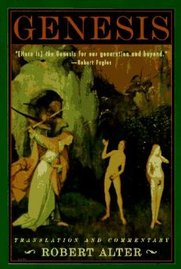
Of the making of many translations and commentaries on the book of Genesis there is no end. After all, the book of Genesis contains not only two of the Western world's most enduring myths of creation but also chronicles the history of early Israel. While past commentators like Hermann Gunkel and Gerhard von Rad were concerned with the ways in which the various literary forms present in the book of Genesis reflected the historical and theological concerns of the texts' writers and hearers, literary critic Alter (The Art of Biblical Narrative) emphasizes the overall narrative unity of the disparate textual units that comprise the book of Genesis. In his translation of the first 11 chapters, for example, Alter carefully reproduces the stylistic devices of repetition and parallelism so characteristic of Hebrew poetry, while his translation of chapters 12-50 captures the dramatic tension and characterization that are the hallmarks of Hebrew narrative style. Alter is ever attentive to the power of paronomasia in the Hebrew so that his translation of Genesis 1:1, "When God began to create heaven and earth, and the earth then was welter and waste (tohu wabohu, in Hebrew) and darkness over the deep and God's breath hovering over the waters...," attempts through alliteration to translate the lilting poetry of the Hebrew phrase. Although Alter's translations lack the sparkle and elegance of Everett Fox's translations of Genesis in The Five Books of Moses (Schocken 1995), his commentaries on the literary qualities of Genesis and his casting of the Hebrew Bible's opening book as a single narrative woven together by the threads of character and theme ensure that Alter's work will take its place in the distinguished ranks of commentaries. BUY IT HERE.
Carlyle, Thomas. On Heroes, Hero-Worship, and the Heroic in History. PDFBooks. 11 Jan. 2010. Web. 8 June 2010. PDF.
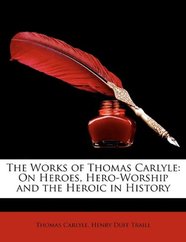
Six essays by Thomas Carlyle, published in 1841 and based on a series of lectures he delivered in 1840. The lectures, which glorified great men throughout history, were enormously popular. In the essays he discusses different types of heros and offers examples of each type, including divinities (pagan myths), prophets (Muhammad), poets (Dante and William Shakespeare), priests (Martin Luther and John Knox), men of letters (Samuel Johnson and Jean-Jacques Rousseau), and rulers (Oliver Cromwell and Napoleon). READ IT HERE.
Cogan, Susan Brassfield. The Pocket Darwin. Oklahomans for Excellence in Science Education. n.d. Web. 9 June 2010. PDF.
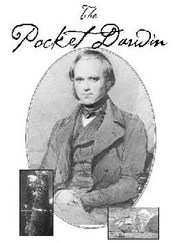
from the Introduction:
Few people know what evolution is all about. Some people think it is a progression to a higher and higher spiritual plane or a fight to become a "higher" animal and if you work really hard to improve yourself, you will become a more "evolved" human being. Some people think it is "survival of the fittest," so only the meanest, most selfish people or animals survive. Still others think it is just an excuse for atheists to ignore the Bible, that evolution is not based on science, and nobody with any honesty or character would or should believe in it. I hope to clear up all these confusing ideas about evolution with this little booklet. What is evolution? Is it scientific? What, exactly, did Charles Darwin give to the world? It would take more than a human lifetime toe examine in detail all the evidence supporting the Theory of Evolution. This booklet will cover some of the main ideas of the theory and give pointers and references to find out more. READ IT HERE.
Few people know what evolution is all about. Some people think it is a progression to a higher and higher spiritual plane or a fight to become a "higher" animal and if you work really hard to improve yourself, you will become a more "evolved" human being. Some people think it is "survival of the fittest," so only the meanest, most selfish people or animals survive. Still others think it is just an excuse for atheists to ignore the Bible, that evolution is not based on science, and nobody with any honesty or character would or should believe in it. I hope to clear up all these confusing ideas about evolution with this little booklet. What is evolution? Is it scientific? What, exactly, did Charles Darwin give to the world? It would take more than a human lifetime toe examine in detail all the evidence supporting the Theory of Evolution. This booklet will cover some of the main ideas of the theory and give pointers and references to find out more. READ IT HERE.
Collins, Robert M. Transforming America: Politics and Culture During the Reagan Years. New York: Columbia UP, 2007. Print.
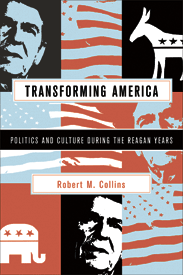
"A masterly synoptic account of the Reagan years (including two chapters on the Cold War)... that is especially good on domestic issues.... Collins is the rare historian who is literate in economics and public policy. He combines this knowledge with a writing style that is direct and understated. Indeed, it is hard to tell from his scrupulous prose what his own ideological leanings may be. Although he does not shrink from criticizing Reagan or his record, Collins confidently dispatches many of the well-entrenched criticisms of the Gipper that most historians roll over for, and in a way that does not read like a pro-Reagan brief." -- Steven F Hayward, Claremont Review of Books
In this rigorous history, professor and author Collins (More: The Politics of Economic Growth in Postwar America) takes a look at the reign of Ronald Reagan, who reinvigorated a lethargic post-Carter nation with a lasting sense of optimism at the same time he accelerated the growing schism between liberal and conservative proponents-his two most powerful legacies. In a clear, succinct and balanced fashion, Collins revisits a time in which postmodernism and multiculturalism emerged as prevailing schools of thought among academia while, outside the ivory tower, Reagan's optimism infected "bourgeois" America. Though he's no apologist, Collins clearly is an admirer of Reagan, a fact he keeps in check, sticking to conventional wisdom in his praise for Reagan's Cold War victory, but adding refreshing context to other aspects of the Reagan mythology. For example, while admitting that Reagan was guilty of not using the bully pulpit to fight the scourge of AIDS, he did increase funding for AIDS research each year of his presidency, while his apparent lack of interest helped to mobilize a precedent-setting level of activism on AIDS sufferers' behalf. In this way, Collins allows the most famous champion of conservatism to emerge as a character in a scene, showing how he was but one part of the cultural forces which ultimately gave birth to the culturally and politically polarized America of today. BUY IT HERE
In this rigorous history, professor and author Collins (More: The Politics of Economic Growth in Postwar America) takes a look at the reign of Ronald Reagan, who reinvigorated a lethargic post-Carter nation with a lasting sense of optimism at the same time he accelerated the growing schism between liberal and conservative proponents-his two most powerful legacies. In a clear, succinct and balanced fashion, Collins revisits a time in which postmodernism and multiculturalism emerged as prevailing schools of thought among academia while, outside the ivory tower, Reagan's optimism infected "bourgeois" America. Though he's no apologist, Collins clearly is an admirer of Reagan, a fact he keeps in check, sticking to conventional wisdom in his praise for Reagan's Cold War victory, but adding refreshing context to other aspects of the Reagan mythology. For example, while admitting that Reagan was guilty of not using the bully pulpit to fight the scourge of AIDS, he did increase funding for AIDS research each year of his presidency, while his apparent lack of interest helped to mobilize a precedent-setting level of activism on AIDS sufferers' behalf. In this way, Collins allows the most famous champion of conservatism to emerge as a character in a scene, showing how he was but one part of the cultural forces which ultimately gave birth to the culturally and politically polarized America of today. BUY IT HERE
Duggan, Lisa and Nan D. Hunter. Sex Wars: Sexual Dissent and Political Culture. New York: Routledge, 2006. Print.
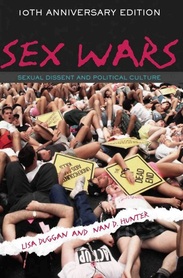
"These indispensible documents are scholarly, passionate, sobering, and contain many pointed lessons that still scream for assimilation by mainstream feminism." -- Gayle Rubin, University of California, Santa Cruz
The political and cultural battles over issues of sexuality that have affected the nation since the mid-1980s are explored in these 15 essays written over the past decade by Duggan (history, NYU), who co-founded the Feminst Anti-Censorship Taskforce (FACT), and Hunter (law, Brooklyn Law Sch.). With refreshing authority, passion, wit, clarity, and outspokenness, these articles, which appear in book form for the first time, seek to encourage dialog about, as they offer cogent feminist analysis of, such complex and provocative issues as the call for regulation/censorship of pornography by Catharine MacKinnon and Andrea Dworkin, the effects of Bowers v. Hardwick (in which the Supreme Court upheld the constitutionality of Georgia's sodomy laws), the distinctions between queer theory and lesbian and gay studies, and the implications of the Sharon Kowalski/Karen Thompson case (Thompson fought Kowalski's parents unsuccessfully for the guardianship of her comatose lover). This historic compilation is an important contribution to the field of sexual politics. BUY IT HERE.
The political and cultural battles over issues of sexuality that have affected the nation since the mid-1980s are explored in these 15 essays written over the past decade by Duggan (history, NYU), who co-founded the Feminst Anti-Censorship Taskforce (FACT), and Hunter (law, Brooklyn Law Sch.). With refreshing authority, passion, wit, clarity, and outspokenness, these articles, which appear in book form for the first time, seek to encourage dialog about, as they offer cogent feminist analysis of, such complex and provocative issues as the call for regulation/censorship of pornography by Catharine MacKinnon and Andrea Dworkin, the effects of Bowers v. Hardwick (in which the Supreme Court upheld the constitutionality of Georgia's sodomy laws), the distinctions between queer theory and lesbian and gay studies, and the implications of the Sharon Kowalski/Karen Thompson case (Thompson fought Kowalski's parents unsuccessfully for the guardianship of her comatose lover). This historic compilation is an important contribution to the field of sexual politics. BUY IT HERE.
Dworkin, Andrea. Intercourse. 20th Anniv. ed. New York: Basic Books, 2006. Print.
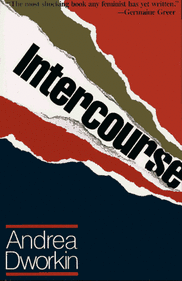
"The most shocking book any feminist has yet written." --Germaine Greer
Dworkin argues that in a society where men oppress women, they will use sex for that purpose as well, and that men's sexual dominion over women underpins the whole system of oppression codified in law. Her most provocative point is that sexual intercourse itself intrinsically creates problems for women's self-esteem. She bases this argument on the premise that human beings need to protect their physical boundaries to feel safe. Since women's boundaries are breached in even the most welcome and humane forms of sexual intercourse, they must therefore experience themselves, as part of their normal existence, as more vulnerable than men experience themselves and less able to assert their humanity. Dworkin's argument is obviously one-sided, disregarding benefits women may derive from these intimate connections. Nor does she spend much time on a solution for the problem of boundaries she has identified. Still, this fascinating book deserves a wide readership. BUY IT HERE.
Dworkin argues that in a society where men oppress women, they will use sex for that purpose as well, and that men's sexual dominion over women underpins the whole system of oppression codified in law. Her most provocative point is that sexual intercourse itself intrinsically creates problems for women's self-esteem. She bases this argument on the premise that human beings need to protect their physical boundaries to feel safe. Since women's boundaries are breached in even the most welcome and humane forms of sexual intercourse, they must therefore experience themselves, as part of their normal existence, as more vulnerable than men experience themselves and less able to assert their humanity. Dworkin's argument is obviously one-sided, disregarding benefits women may derive from these intimate connections. Nor does she spend much time on a solution for the problem of boundaries she has identified. Still, this fascinating book deserves a wide readership. BUY IT HERE.
Machiavelli, Niccolo. The Prince. The Constitution Society. n.d. Web. 16 May 2010. PDF.
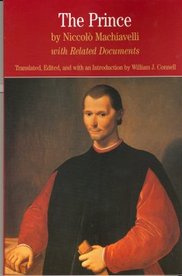
“[Machiavelli] can still engage our attention with remarkable immediacy, and this cannot be explained solely by the appeal of his ironic observations on human behaviour. Perhaps the most important thing is the way he can compel us to reflect on our own priorities and the reasoning behind them; it is this intrusion into our own defenses that makes reading him an intriguing experience. As a scientific exponent of the political art Machiavelli may have had few followers; it is as a provocative rhetorician that he has had his real impact on history.” –from the Introduction by Dominic Baker-Smith
When Lorenzo de' Medici seized control of the Florentine Republic in 1512, he summarily fired the Secretary to the Second Chancery of the Signoria and set in motion a fundamental change in the way we think about politics. The person who held the aforementioned office with the tongue-twisting title was none other than Niccolò Machiavelli, who, suddenly finding himself out of a job after 14 years of patriotic service, followed the career trajectory of many modern politicians into punditry. Unable to become an on-air political analyst for a television network, he only wrote a book. But what a book The Prince is. Its essential contribution to modern political thought lies in Machiavelli's assertion of the then revolutionary idea that theological and moral imperatives have no place in the political arena. "It must be understood," Machiavelli avers, "that a prince ... cannot observe all of those virtues for which men are reputed good, because it is often necessary to act against mercy, against faith, against humanity, against frankness, against religion, in order to preserve the state." With just a little imagination, readers can discern parallels between a 16th-century principality and a 20th-century presidency. READ IT HERE.
When Lorenzo de' Medici seized control of the Florentine Republic in 1512, he summarily fired the Secretary to the Second Chancery of the Signoria and set in motion a fundamental change in the way we think about politics. The person who held the aforementioned office with the tongue-twisting title was none other than Niccolò Machiavelli, who, suddenly finding himself out of a job after 14 years of patriotic service, followed the career trajectory of many modern politicians into punditry. Unable to become an on-air political analyst for a television network, he only wrote a book. But what a book The Prince is. Its essential contribution to modern political thought lies in Machiavelli's assertion of the then revolutionary idea that theological and moral imperatives have no place in the political arena. "It must be understood," Machiavelli avers, "that a prince ... cannot observe all of those virtues for which men are reputed good, because it is often necessary to act against mercy, against faith, against humanity, against frankness, against religion, in order to preserve the state." With just a little imagination, readers can discern parallels between a 16th-century principality and a 20th-century presidency. READ IT HERE.
Marsden, George M. Fundamentalism and American Culture. Oxford: Oxford UP, 2006. Print.
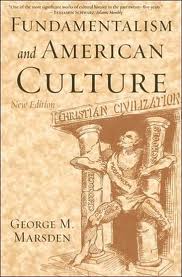
"Marsden reveals a great deal of history, showing the origins, development and growth of evangelicalism and fundamentalism. His is a focused yet broad scholarly work that has stood the test of time, a worthwhile history resource on fundamentalism in America."--Congregational Libraries Today
Many Americans today are taking note of the surprisingly strong political force that is the religious right. Controversial decisions by the government are met with hundreds of lobbyists, millions of dollars of advertising spending, and a powerful grassroots response. How has the fundamentalist movement managed to resist the pressures of the scientific community and the draw of modern popular culture to hold on to their ultra-conservative Christian views? Understanding the movement's history is key to answering this question. Fundamentalism and American Culture has long been considered a classic in religious history, and to this day remains unsurpassed. Now available in a new edition, this highly regarded analysis takes us through the full history of the origin and direction of one of America's most influential religious movements.
For Marsden, fundamentalists are not just religious conservatives; they are conservatives who are willing to take a stand and to fight. In Marsden's words (borrowed by Jerry Falwell), "a fundamentalist is an evangelical who is angry about something." In the late nineteenth century American Protestantism was gradually dividing between liberals who were accepting new scientific and higher critical views that contradicted the Bible and defenders of the more traditional evangelicalism. By the 1920s a full-fledged "fundamentalist" movement had developed in protest against theological changes in the churches and changing mores in the culture. Building on networks of evangelists, Bible conferences, Bible institutes, and missions agencies, fundamentalists coalesced into a major protest movement that proved to have remarkable staying power.
For this new edition, a major new chapter compares fundamentalism since the 1970s to the fundamentalism of the 1920s, looking particularly at the extraordinary growth in political emphasis and power of the more recent movement. Never has it been more important to understand the history of fundamentalism in our rapidly polarizing nation. Marsden's carefully researched and engrossing work remains the best way to do just that. BUY IT HERE
Many Americans today are taking note of the surprisingly strong political force that is the religious right. Controversial decisions by the government are met with hundreds of lobbyists, millions of dollars of advertising spending, and a powerful grassroots response. How has the fundamentalist movement managed to resist the pressures of the scientific community and the draw of modern popular culture to hold on to their ultra-conservative Christian views? Understanding the movement's history is key to answering this question. Fundamentalism and American Culture has long been considered a classic in religious history, and to this day remains unsurpassed. Now available in a new edition, this highly regarded analysis takes us through the full history of the origin and direction of one of America's most influential religious movements.
For Marsden, fundamentalists are not just religious conservatives; they are conservatives who are willing to take a stand and to fight. In Marsden's words (borrowed by Jerry Falwell), "a fundamentalist is an evangelical who is angry about something." In the late nineteenth century American Protestantism was gradually dividing between liberals who were accepting new scientific and higher critical views that contradicted the Bible and defenders of the more traditional evangelicalism. By the 1920s a full-fledged "fundamentalist" movement had developed in protest against theological changes in the churches and changing mores in the culture. Building on networks of evangelists, Bible conferences, Bible institutes, and missions agencies, fundamentalists coalesced into a major protest movement that proved to have remarkable staying power.
For this new edition, a major new chapter compares fundamentalism since the 1970s to the fundamentalism of the 1920s, looking particularly at the extraordinary growth in political emphasis and power of the more recent movement. Never has it been more important to understand the history of fundamentalism in our rapidly polarizing nation. Marsden's carefully researched and engrossing work remains the best way to do just that. BUY IT HERE
Miner, Horace. "Body Ritual Among the Nacirema." Fasnafan: A Minor Library in Sociology, Anthropology and the Humanities. Tripod. n.d. Web. 20 Dec. 2010.
This journal article satirizes anthropological papers on "other" cultures, and the culture of the United States. Published in American Anthropologist, vol 58, June 1956. pp. 503-507. READ IT HERE.
Plato. "Allegory of the Cave." World Civilization Reader. Washington State University. n.d. Web. 19 Dec. 2010.
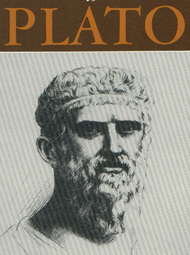
The Allegory of the Cave--also known as the Analogy of the Cave, Plato's Cave, or the Parable of the Cave--is an allegory used by the Greek philosopher Plato in his work The Republic to illustrate "our nature in its education and want of education." It is written as a fictional dialogue between Plato's teacher Socrates and Plato's brother Glaucon at the beginning of Book VII. Socrates describes a group of people who have lived chained to the wall of a cave all of their lives, facing a blank wall. The people watch shadows projected on the wall by things passing in front of a fire behind them, and begin to ascribe forms to these shadows. According to Socrates, the shadows are as close as the prisoners get to viewing reality. He then explains how the philosopher is like a prisoner who is freed from the cave and comes to understand that the shadows on the wall are not constitutive of reality at all, as he can perceive the true form of reality rather than the mere shadows seen by the prisoners. READ IT HERE.
Source: "Allegory of the Cave." Wikipedia, the Free Encyclopedia. Wikimedia Foundation, Inc. 18 Dec. 2010. Web. 19 Dec. 2010.
Source: "Allegory of the Cave." Wikipedia, the Free Encyclopedia. Wikimedia Foundation, Inc. 18 Dec. 2010. Web. 19 Dec. 2010.
Woolf, Virginia. A Room of One's Own. eBooks@Adelaide. 1 Jan. 2010. Web. 8 June 2010.
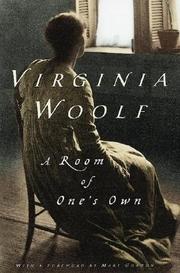
Essay by Virginia Woolf, published in 1929. The work was based on two lectures given by the author in 1928 at Newnham College and Girton College, Cambridge. Woolf addressed the status of women, and women artists in particular, in this famous essay which asserts that a woman must have money and a room of her own if she is to write. Woolf celebrates the work of women writers, including Jane Austen, George Eliot, and the Brontes. In the final section Woolf suggests that great minds are androgynous. She argues that intellectual freedom requires financial freedom, and she entreats her audience to write not only fiction but poetry, criticism, and scholarly works as well. The essay, written in lively, graceful prose, displays the same impressive descriptive powers evident in Woolf's novels and reflects her compelling conversational style. READ IT HERE.
Artwork included in the site banner was created by visual artist Barbara Kruger. Information about Kruger (the artist) and her artwork, including an annotated list of web resources, are available on the Barbara Kruger page of our website.
